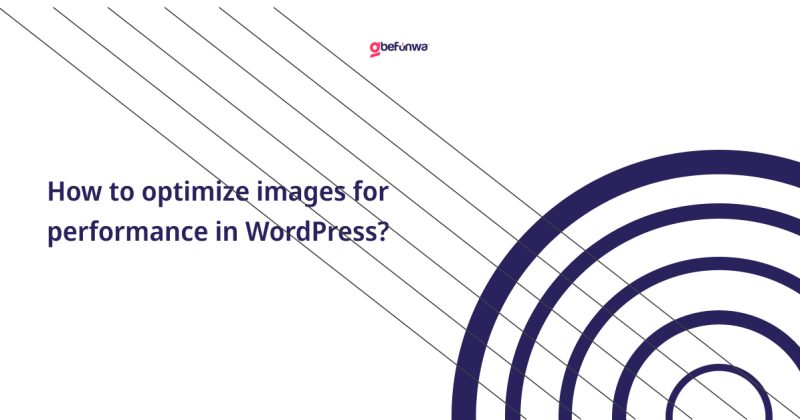
In today’s visual world, images are the lifeblood of any website. They can either draw attention and keep people interested, or bore people and cause them to exit your site before they even find what they came for. Images play a crucial role in enhancing the visual appeal and engagement of WordPress websites. However, if not optimized properly, images can significantly impact site performance, leading to slower load times and reduced user satisfaction. In this detailed guide, we will explore best practices and techniques for optimizing images to improve performance in WordPress.
When uploading images to WordPress, it is essential to select the appropriate file format to balance image quality and file size. For photographs and images with complex colors and gradients, use the JPEG format to achieve high-quality compression. For images with transparency or a limited color palette, such as logos or icons, opt for the PNG format. Avoid using the BMP format, as it tends to result in large file sizes and slower load times. And slower load times are just one of many reasons people click away prematurely.
Before uploading an image to WordPress, resize it to the appropriate dimensions to match the display size on your website. You can do this using image editing software or online tools to resize the images while maintaining aspect ratio and visual quality. By uploading appropriately sized images, you will reduce file size and minimize the need for browser resizing, resulting in faster load times and improved performance.
Compression is a crucial step in optimizing images for the web. Use image compression tools or WordPress plugins to reduce the file size of images without significant loss of visual quality. Popular image compression plugins for WordPress include Smush, ShortPixel, and Imagify. These plugins offer various compression settings and optimization techniques to achieve optimal results while preserving image clarity and detail.
In addition to optimizing image file size, pay attention to image metadata such as title, alt text, and description. Ensure that each image has alt text that is descriptive and rich in keywords, as well as accurately describes the image content for accessibility and SEO purposes. Use relevant keywords in image titles and descriptions to improve search engine visibility and enhance user experience.
Implement responsive images in WordPress to ensure optimal display across different devices and screen sizes. Use the srcset attribute or a responsive image plugin to serve different image sizes based on the user’s device and viewport dimensions. By delivering appropriately sized images, it is possible to minimize bandwidth usage and improve loading speed for mobile users and visitors on slower connections.
Lazy loading is a technique that defers the loading of images until they are visible in the user’s viewport. Enable lazy loading for images in WordPress to prioritize the loading of critical content and improve page load times. This reduces the bandwidth used and enhances user satisfaction. Many WordPress caching plugins and performance optimization tools offer built-in lazy loading features or integrations with lazy loading scripts such as LazyLoad by WP Rocket or Lazy Load XT.
Content Delivery Networks (CDNs) cache and deliver images from servers located closer to the user’s geographical location, reducing latency and improving load times. Integrate a CDN with your WordPress site to distribute image content across a global network of servers. Popular CDN services such as Cloudflare, Amazon CloudFront, and StackPath offer seamless integration with WordPress and provide additional performance benefits such as DDoS protection and SSL support.
Optimizing images for performance is a critical aspect of WordPress website optimization and cannot be overemphasized. By following best practices such as choosing the right file format, resizing and compressing images, optimizing metadata, implementing responsive images, enabling lazy loading, and leveraging CDNs, you can significantly improve site performance, reduce load times, and enhance user experience. Incorporate these image optimization techniques into your WordPress workflow to ensure fast, efficient, and visually appealing websites that delight users and achieve your performance goals.
Deborah Oludimu is an experienced content writer with 3+ years of experience. She is skilled in research, writing, and editing to produce high-quality, engaging content across industries. Deborah is passionate about creating content that informs and inspires
© 2025 GBEFUNWA.COM. All rights reserved.
The WordPress® trademarks are the intellectual property of the WordPress Foundation, and the Woo® and WooCommerce® trademarks are the intellectual property of WooCommerce, Inc. Uses of the WordPress®, Woo®, and WooCommerce® names in this website are for identification purposes only and do not imply an endorsement by WordPress Foundation or WooCommerce, Inc. gbefunwa is not endorsed or owned by, or affiliated with, the WordPress Foundation or WooCommerce, Inc.